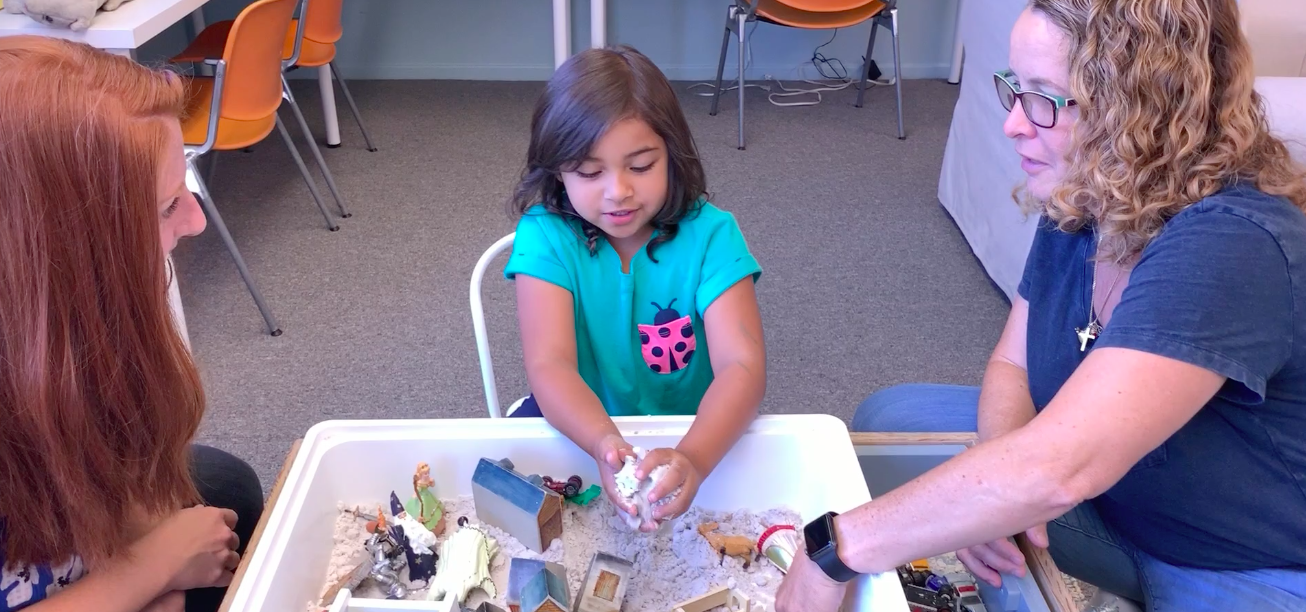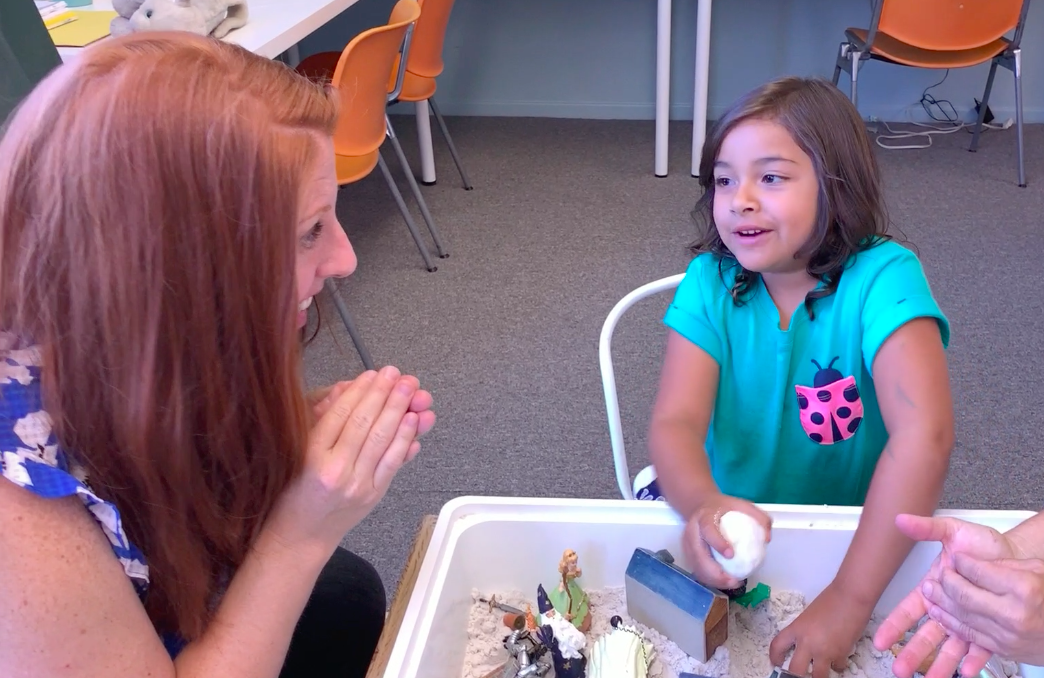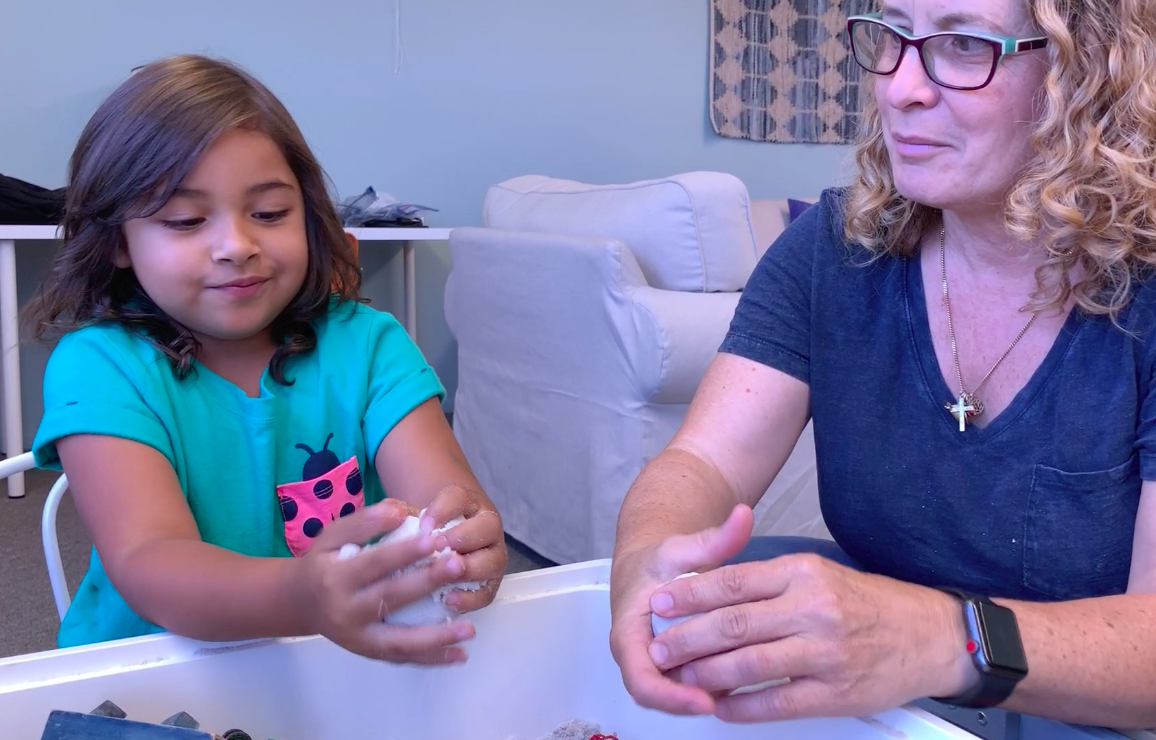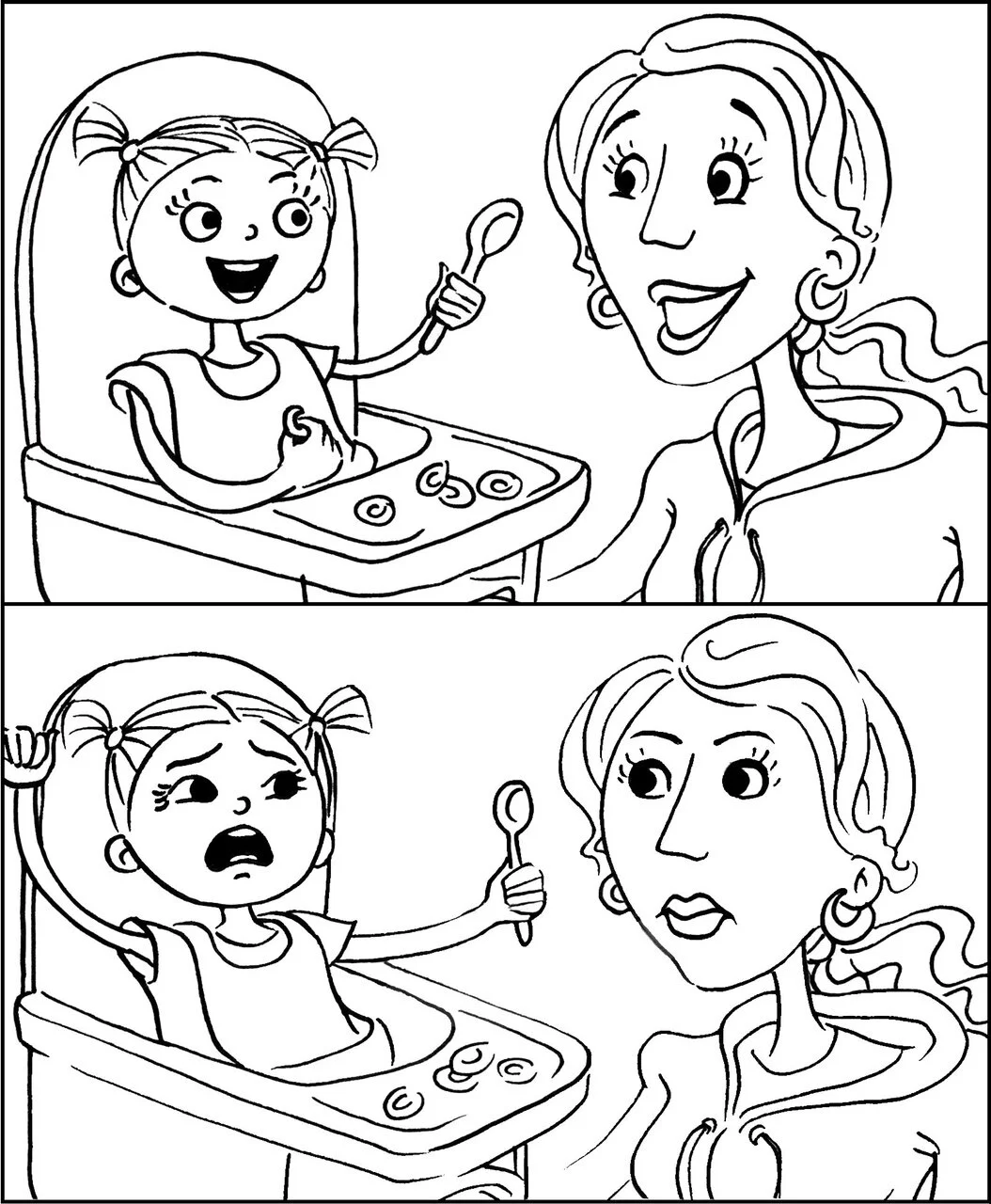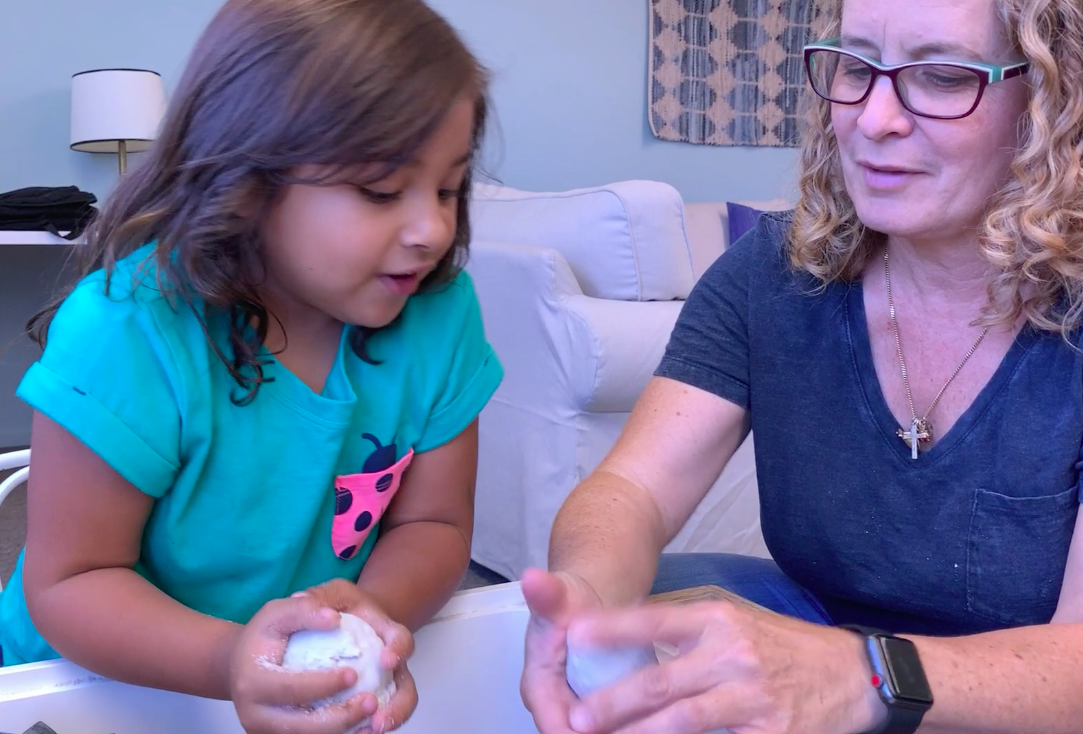PlayStrong Strategy 2: Make Yourself a Mirror
One of the most essential functions of a parent is to show our kids how to be successful in relationships. We want kids to listen to what we say, but they actually learn much more from watching what we do! Cultivating our kids’ ability to tune in, read others, and connect in positive ways depends on how we mirror and model those skills ourselves - almost from the moment our kids are born.
Watching Us
There’s an old saying that goes, “Do as I say, not as I do.” That is nearly impossible when applied to parents of young children, as even in early infancy, our children are biologically wired to watch us constantly and learn from everything we do.
Your child’s brain actually changes based on everything she sees, hears, smells, touches, tastes and feels. And when an experience, whether positive or negative, is repeated over and over, it strengthens connections within the brain. Tina Bryson likes to say, “Experiences cause neurons to fire. And where they fire, they wire.”
With each shared moment, we have an opportunity to build strong and positive connections with our kids. Through repeated experiences together, your child’s brain is growing new connections between the neurons, too.
Learning from Imitation
Remember how old your baby was when she first started to look at you - really look at you - and notice your changing facial expressions? Sharing smiles, scrunching up your nose, sticking out your tongue. Infants’ brains are developing in an astoundingly early growth spurt in the first two years, precisely because they were born to look at us and copy exactly what we do.
And it doesn’t stop there. No one on Earth is better at learning by imitating us than our toddlers. Once their minds develop early symbolic thinking, toddlers begin to play exactly what they see grown-ups doing and replaying the simple scripts they see in the world around them. They give the baby doll a “bath”, they go shopping at the “store”, and they pretend to do grown-up jobs to understand what it’s like to be a “chef”, a “scientist” or even a “rock star”.
Sometimes toddlers are actually too good at mimicking the adult world. I will always remember the time Grandma Yaya came for a visit and presented my son, who was just three at the time, with a brand new four pack of brightly colored PlayDoh. Jack insisted on opening the red jar, his favorite color, all by himself. He pulled and tugged at the plastic lid until he realized it was too tight, shrugged his shoulders in frustration and let out a loud expletive, “Well, dang it!” Grandma Yaya doubled over with laughter, gave me a knowing look and said, “Who do you suppose he learned that from?”
Mirroring Matters
So let’s talk about a special kind of neurons that help our little ones understand the social world they live in, called mirror neurons. These smart cells in your brain were discovered by neuroscientists in the 1990’s when they realized that some neurons get fired up when we perform an action and when we watch someone else do the same thing.
Because the same set of neurons fire when you smile at your baby and your baby smiles back at you, they named these brain cells mirror neurons. They make us “mirror” another’s actions.
Mirroring usually happens unconsciously with the people we are emotionally closest to. Like when you are taking a walk with your child and approaching a busy road. Without saying a word, both of you reach out to take each other’s hand before you cross the street. It’s a beautiful kind of synchrony that happens, without a need for words, because we know each other and feel so closely connected.
Parent and toddler naturally mirror each other. Illustration: Yoly Stroeve
Mirror neurons help parents tune in to the emotional state of their babies, too. When your baby’s mood changes from sunny to cloudy, you auto-adjust your facial expression, vocal tone and gesturing to match your baby without even thinking about it.
Some scientists believe that mirror neurons are the key to developing empathy, because if we can easily imagine another person’s feelings or the deeper motivation for their behavior, it could potentially strengthen our emotional intelligence.
Mirroring on Purpose
Did you know that mirroring on purpose happens all the time in restaurants to boost business? You may not be picking up on it, but restaurant servers are trained to subtly mirror their customers to give them an enjoyable dining experience. When waiters bend their knees to take your order at your eye level and repeat back your order word-for-word to make sure they got it right, customers feel more satisfied and tend to leave a bigger tip!
New research indicates that mirroring on purpose, or finding ways to consciously and intentionally complement our kids’ ideas and actions, may dramatically increase the positive effects of mirroring for our parent-child relationships, too.
“Being your child’s mirror doesn’t just make for better play. It helps us get more attuned to see who our kids really are, and makes us the parents we aspire to be.”
So let’s learn the second PlayStrong strategy, Make Yourself a Mirror, based on kids’ absolute love of subliminal mirroring. I can’t guarantee that they will leave you a big juicy tip! But the pay-off will be obvious. You’ll see a visible change in your child’s emotional state, from cloudy to sunny, almost as soon as you start using the new strategy.
We know connecting can be hard sometimes. Imagine your child just asked you to watch her bounce on a trampoline. Normally you’ll come over, feel mildly enthused as you see her excitedly bouncing up and down, and maybe say “That’s nice, honey” before getting back to what you’d rather be doing. In that moment, her brain is all primed to fire and wire with yours, and your mirror neurons could fire up with hers in a beautiful mind-melding synchrony. But instead it feels half-hearted and fizzles out. Not fun for either of you.
Our kids do feel whether we are all “there” or not. And it’s okay - really okay - if you don’t feel like showing up every minute of the day. Because the truth is, we aren’t meant to match our kids’ enthusiasm every time. We would get burned out really fast!
Attunement
In fact, Edward Tronick, in his groundbreaking research on emotional synchrony between mothers and babies, found that we only need to emotionally match our children 30% of the time for them to experience us as available and consistent. Development experts have a term for brief moments when parents and children sync up on the same emotional frequency. Like looking in each other’s eyes and knowing exactly how your child feels. Tronick and others refer to it as attunement. Can you believe it? Being attuned to our kids at least 30% of the time means they feel secure with us! That means if we can tune-in to our kids’ emotional frequency by paying attention to their feelings and non-verbal signals, the window to their emotions, at least a third of the time, our relationships will be in great shape.
This PlayStrong strategy, Make Yourself a Mirror, goes a long way to help parents level up on attunement. And it’s incredibly simple. In fact, it’s one of the easiest PlayStrong strategies to learn.
Nonverbal Mirroring
Kids are always asking us to watch them as they play. All you need to do is come over, take a closer look at your child’s action, and match something they are doing with their (B) body, (F) face or (V) voice. Just choose B-F-or-V, and make yourself a human mirror of the action.
(B) Body: How is her body moving, is there a rhythm, pattern or gesture you can copy?
(F) Face: What does her facial expression look like, and can you capture how she might be feeling by copying it with your expression?
(V) Voice: What does her vocal tone sound like, is she loud or quiet, is she speaking fast or slow, and can you match the volume or tone of her voice?
So let’s go back to our trampoline example and try it again. This time when you see your child excitedly bouncing with a huge smile on her face, try to match one of her nonverbal actions - B, F, or V - as you watch her or join in.
A good way to try out this strategy for the first time is to notice what your body, face and voice want to do automatically as you watch the following video:
What did you notice as you watched this child bouncing? Did you feel your chin wanted to bob without even thinking about it? Did you start smiling or feel happy? Was that influenced by his playful, bouncy voice tone? Now your mirror neurons are switched on! You’re mirroring without even trying! It’s that easy!
Now let’s practice mirroring on purpose. Knowing how to switch on your mirror neurons can help enormously when you’re not in a playful mood, but your child really needs emotional connection with you. Here, let’s imagine that when she asks you to come and watch, you find a spot to stand, sit or kneel at her eye level (just like waiters who get the biggest tips), and you do ONE or TWO of the following:
(B) Body: As she bounces, you bob your head up and down at the same rhythm, up and down with each bounce.
(F) Face: Give her an encouraging smile that matches the enthusiasm you see on her face.
(V) Voice: For little ones, you could say “Boing! Boing!” where the sound of your voice mimics the spring action of the trampoline. For littles and older kids, you can describe the jumping action while you use the same kind of “bouncy” voice, “You-are-jump-ing-as-high-as-you-can!”
Sometimes, as in this example, you could get away with mirroring all three nonverbal signals, B-F-and-V, and your child will thank you by getting into a really spectacular state of connection with you. Being closely attuned in a way that nonverbally communicates to her, “You can feel totally secure in this rhythm with me.”
Don’t Copycat
Kids usually don’t like to be imitated exactly, so this isn’t about repeating back what your child just said word for word or jumping up and down exactly the way they do. There is such a thing as too much mirroring, and kids are not big fans. We’ve all seen siblings copying each other as a way of ridiculing, annoying, and driving each other nuts on long car trips. Or a student who worries that a classmate is trying to copycat the way she writes and is thus trying to steal what makes her unique.
Kids hate being copied exactly, so if you’re going to mirror them effectively, I recommend choosing to copy ONE or TWO of the B-F-V non verbals, but usually not all three at the same time. Keep it subtle. Don’t be too obvious. And vary it a little bit. If your child wants you to draw basic shapes with him, don’t draw the exact same shapes in the same places on the paper. Choose different colors, adjust sizes, put some triangles upside down. As long as there is at least ONE element that is similar, you’ll be getting into an attuned state. And your kids’ neuroception, or the brain’s unconscious radar, will be getting the subliminal message that you’re really “there” - which is exactly where they want us to be.
Video: Make Yourself a Mirror in Action
Here’s a video clip that demonstrates the Make Yourself a Mirror strategy in action. Notice how this mother tries to mirror her daughter in different ways. Can you spot how many times she mirrors her daughter’s body, face and voice? Sometimes we need to keep trying, and this mom keeps attuning to her daughter’s ideas, every time.
*Lilliana is not a play therapy client, she and her mom are actors who volunteered to teach grown-ups how to PlayStrong.
Could you see that Mom was mirroring Lilliana’s (B) body when she made snowballs, (F) face when she looked closely at her daughter’s facial expressions, and (V) voice when she tried to match vocal tone and inflection? Sometimes I tried capturing Lilliana’s physical actions with my voice, like when she was chopping her mom’s snowball.
As with the first PlayStrong strategy, Think Out Loud, we are making good use of another bottom-up technique to help kids get into a secure frequency with a caring adult that can last for minutes at a time. When you Make Yourself a Mirror, what you are actually doing is bathing the synaptic connections in your child’s brain with the same endorphins, or feel-good chemicals, that get released after a great workout at the gym. This has immediate and long-lasting benefits for lowering stress, preventing childhood depression, and improving your child’s attention, motivation and positive attitude.
Something as simple as mirroring your child as she plays for a few minutes each day may ensure she feels more secure, more emotionally connected, and ready to cooperate as a family almost as soon as you finish playing.
Mirroring for the Win
One mom who learned the Make Yourself a Mirror strategy was skeptical at first, but things were so difficult getting her eight year old to take a bath and do homework (I mean, screaming fits and endless arguing), she was willing to try anything. She agreed to look for a calm moment, set a timer for ten minutes, and play with her son simply focusing on mirroring his body, face, and voice.
After finding herself in a surprisingly peaceful state of attunement with her son, she noticed he was smiling more, inviting her in, and for the first time in weeks, they were enjoying each other’s company. But what blew her away was when the playing was over. She was bracing herself for a fight “for just one more minute”, but her eight year old actually got up and opened the door for her! (This is a true story, I swear!)
“Here, Mom, let me get that for you,” he said. He was happier to dig into homework and he was even more willing to take a bath if he could bring his action figures in. The same action figures he had played with his mom earlier in the day. “I have discovered my child’s love language, and it is play,” his mom said.
I agree with her completely. Play is every child’s love language, and with PlayStrong, parents and professionals can re-learn how to communicate in the nonverbal language of children. In just minutes a day, you can make your child feel loved by tuning in to her emotional state, taking her in more deeply, and showing her that you understand what she is experiencing. The truth is, being your child’s mirror doesn’t just make for better play. It helps us get more attuned to see who our kids really are, and makes us the parents we aspire to be.
Go back and learn the first PlayStrong strategy, Think Out Loud >>

